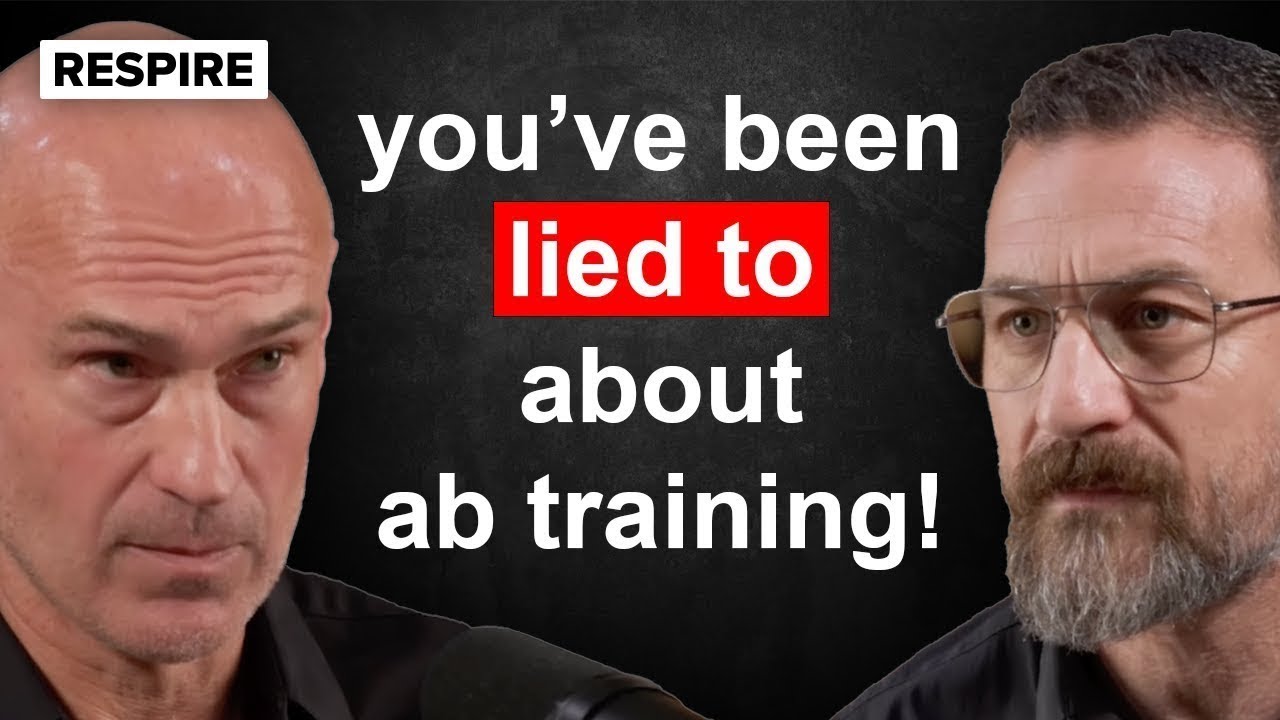When it comes to core training, the fitness industry is full of myths, misunderstandings, and wasted effort. Many people assume that doing hundreds of crunches or high-rep ab exercises is the secret to building a strong core and getting visible abs. In reality, that couldn’t be further from the truth.
Franco Columbu, a former Mr. Olympia known for his impressive physique and sculpted midsection, famously avoided direct ab training. Despite winning awards for his abdominal definition, he relied on heavy lifting, power breathing, and core engagement during compound movements rather than crunches or sit-ups. His results were not a fluke, but a reflection of training principles grounded in physiology and strength science.

The Core Misconception: Reps Over Tension
The idea that more reps will burn belly fat or build a better midsection is a long-standing fitness myth. In truth, the key to effective core training lies in tension and attention — not quantity.
Unlike muscles that benefit from hypertrophy-focused training, the core’s primary role is stabilization. This means it responds best to low-rep, high-tension exercises that challenge your ability to maintain posture, pressure, and alignment. Randomly performing countless variations of ab movements won’t yield results if you’re not building true strength through controlled, focused contractions.
What Real Core Training Looks Like
Start with exercises that force your body to reflexively stabilize your spine. Movements like front-loaded kettlebell squats or zercher squats challenge your abdominal wall without direct spinal flexion. These lifts build awareness and strength in your deep core muscles.
In contrast, starting with planks — especially for individuals with a weak core — can be counterproductive. If you can’t generate tension in your abs, simply holding a position won’t help you develop functional strength.

Building Intra-Abdominal Pressure (IAP)
Learning to harness intra-abdominal pressure is one of the most critical and overlooked aspects of core training. This involves pressurizing your abdominal cavity by contracting the pelvic floor, engaging the diaphragm, and tightening the abdominal wall. Think of it as creating a protective, stabilizing “cylinder” around your spine.
To practice, start with power breathing drills. Stand or sit upright, breathe deeply into your belly, and tighten your pelvic floor as if you’re preventing yourself from using the restroom. Then exhale forcefully through pursed lips in a rhythmic, hissing pattern. This method teaches you how to maintain abdominal tension under load and reinforces diaphragm engagement.
Internal Focus and Muscle Control
Many advanced strength athletes use internal cues to activate muscles during heavy lifts. While motor learning theory often favors external cues, developing internal awareness of how specific muscles contract is crucial for mastering core stability.
Take time to consciously activate different parts of your abdomen. Imagine directing energy to your lower abs, obliques, or transverse abdominis. Gymnasts, martial artists, and elite lifters use this technique to build precise, powerful control over their core muscles.

Train Abs Like a Strength Movement
The abs respond best to the same principles that govern other strength training:
- Low reps (3–5 reps per set)
- High tension
- Excellent form and focus
- Full-body integration
Use exercises that require core activation, such as weighted carries, overhead presses, and heavy squats. Treat your core like a key player in these lifts, not an isolated accessory muscle.
Avoid high-rep ab routines designed to “burn fat” — they don’t work. Fat loss comes from overall energy balance, and the best way to reveal abdominal definition is through a combination of nutrition, resistance training, and recovery.
Stabilize vs. Flex
In strength movements like deadlifts or squats, the goal is to maintain a neutral spine while generating intra-abdominal pressure. In contrast, during targeted abdominal work, there may be a slight spinal flexion, but it should be controlled and limited.
Learning to differentiate between stabilization and flexion is key to developing functional abs that support your lifts and your posture.

The Breathing Connection
Breathing is integral to core activation. Most people breathe shallowly, engaging only the upper chest. Instead, train yourself to breathe low into the belly, using the diaphragm.
To test this, try taking a deep breath with your mouth wide open — you’ll notice your chest rises. Now try breathing through pursed lips or one nostril. This increases resistance and directs the breath downward, properly engaging the diaphragm.
Once you’ve filled the abdomen with air, you hold that pressure (the “exhalation that didn’t happen”) to stabilize the core. This technique, used in powerlifting as the Valsalva maneuver, helps protect the spine under load.
Strength Is a Noisy Process
It’s not uncommon to grunt, hiss, or even yell during heavy lifts. These sounds are part of forceful exhalation and are often linked with increased strength output. Studies have shown that vocal effort can boost performance in both lifting and striking sports.
Rather than suppressing sound, embrace breathing techniques that match your effort level. As one martial arts expression goes, you want to “breathe behind the shield” — staying tight while moving and breathing efficiently.

Final Thoughts: Ab Training Without Ab Exercises?
Once you understand and master intra-abdominal pressure, breathing mechanics, and tension control, you may find that your traditional ab workouts become less necessary. As Franco Columbu demonstrated, staying tight during heavy compound lifts can build a stronger, more defined core than any number of crunches ever could.
If your goal is a resilient midsection, begin by treating your abs like a foundational strength muscle. Refine your breathing, improve your bracing, and use compound movements to integrate your core into real-world strength.
Ready to take your core strength to the next level? Explore our expert-designed strength and conditioning programs, or consult with a certified coach to build a personalized plan that supports your performance goals from the inside out.



